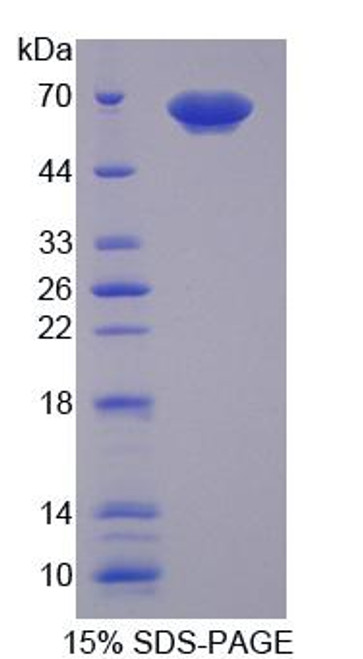Product Description
Human Poly (U) -binding-splicing factor PUF60 (PUF60) ELISA Kit | AE25008HU | Abebio
Species Reactivity: Human (Homo sapiens)
Abbreviation: PUF60
Alternative Name: FIR; FLJ31379; RoBPI; SIAHBP1; FBP interacting repressor|Ro ribonucleoprotein binding protein 1|Ro ribonucleoprotein-binding protein 1|fuse-binding protein-interacting repressor|poly-U binding splic
Application: ELISA
Range: 31.25-2000 pg/mL
Sensitivity: 15.1 pg/mL
Intra-Assay: ≤5.1%
Inter-Assay: ≤9.2%
Recovery: 0, 95
Sample Type: Serum, Plasma, Other biological fluids
Detection Method: Sandwich
Analysis Method : Quantitive
Test Principale: This assay employs a two-site sandwich ELISA to quantitate PUF60 in samples. An antibody specific for PUF60 has been pre-coated onto a microplate. Standards and samples are pipetted into the wells and anyPUF60 present is bound by the immobilized antibody. After removing any unbound substances, a biotin-conjugated antibody specific for PUF60 is added to the wells. After washing, Streptavidin conjugated Horseradish Peroxidase (HRP) is added to the wells. Following a wash to remove any unbound avidin-enzyme reagent, a substrate solution is added to the wells and color develops in proportion to the amount of PUF60 bound in the initial step. The color development is stopped and the intensity of the color is measured.
Product Overview: Poly (U) -binding-splicing factor PUF60 is a Ro RNP-binding protein. It interacts with Ro RNPs and their interaction is thought to represent a gain of function for Ro RNPs. This protein also forms a ternary complex with far upstream element (FUSE) and FUSE-binding protein. It can repress a c-myc reporter via the FUSE. It is also known to target transcription factor IIH and inhibit activated transcription. This gene is implicated in the xeroderma pigmentosum disorder. There are two alternatively spliced transcript variants of this gene encoding different isoforms. There seems to be evidence of multiple polyadenylation sites for this gene.
Stability: The stability of ELISA kit is determined by the loss rate of activity. The loss rate of this kit is less than 5% within the expiration date under appropriate storage condition. The loss rate was determined by accelerated thermal degradation test. Keep the kit at 37°C for 4 and 7 days, and compare O.D.values of the kit kept at 37°C with that of at recommended temperature. (referring from China Biological Products Standard, which was calculated by the Arrhenius equation. For ELISA kit, 4 days storage at 37°C can be considered as 6 months at 2 - 8°C, which means 7 days at 37°C equaling 12 months at 2 - 8°C) .
 Euro
Euro
 USD
USD
 British Pound
British Pound
 NULL
NULL












